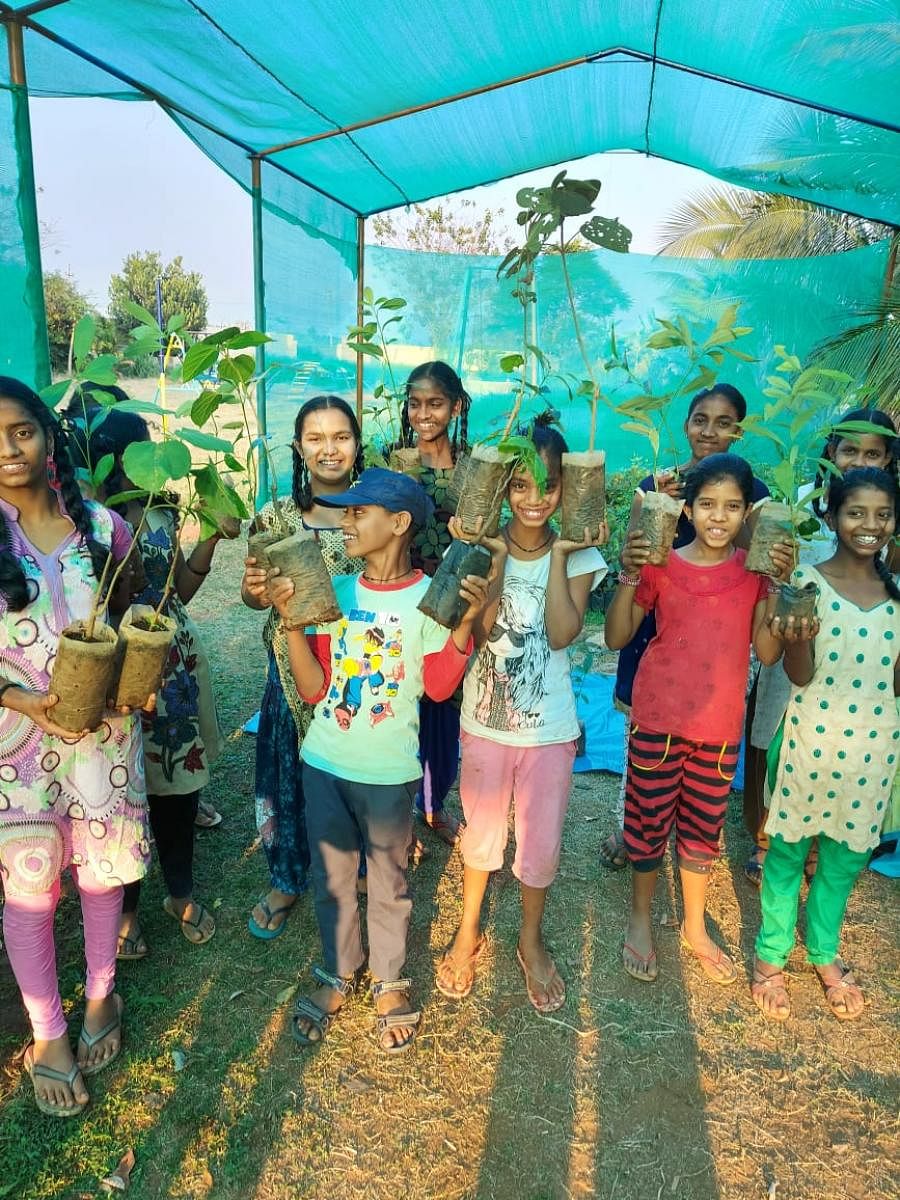
A news report on makali beru (Decalepis Hamiltonii) smuggling in BR Hills published five years ago changed the course of Ramegowda and Ketamma's lives — from traditional healers to protectors of biodiversity. This couple belongs to the indigenous Soliga community, who inhabit this region.
The report also forced G S Jayadeva, an educationist and ethnobotanist in Chamarajanagar, into action. He had already noticed supply shortage of this woody climber which is sought after for its pickle and medicinal use. During his search for partners in conservation, he came across the Soliga couple’s medicinal plant nursery.
Their ability to raise seedlings, even of plants that are difficult to grow, their understanding of forest ecosystems and plant combinations, and their knowledge of the properties and uses of plants and more than anything else, their passion to nurture plants made them the natural choice for his conservation initiative.
To prevent the illegal harvesting of makali, which is identified as an endangered species by the International Union for Conservation of Nature, they decided to raise the seedlings and encourage people to grow them in their backyard and farms. “This ensures easy availability and thus protects forest plants,” says Jayadeva.
More than 50,000 seedlings of makali have been distributed locally and supplied to different parts of the state, notably Bannerghatta National Park and Makali Betta near Bengaluru.
“Overexploitation of this medicinal plant due to increased demand had led to the extinction of makali in these two landscapes damaging their ecology,” says A N Yellappa Reddy, Chairperson, Bangalore Environment Trust, who joined the cause. According to Yellappa Reddy, makali grows on rocky outcrops and plays an important role in water percolation, keeping perennial streams alive.
Collaborative effort
The collaboration of the traditional healers, an educationist with a keen interest in ethnobotany, and a former administrator of forests and environmentalist has led to the conservation and propagation of the key species of B R Hills.
The fact that only 25% of the pods yield good seeds explains the effort the couple put in to raise 50,000 seedlings of makali.
Every year during Ugadi, they forage for about three months in the forests to collect these seeds. Likewise, they have nurtured several lakhs of plants of over 100 varieties found in B R Hills.
Betta Honne (Bischofia javanica), wild cinnamon (Cinnamomum malabatrum), thalejadhari (Clematis gouriana), kakkilu (Celtis tetrandra), jeneraku (Mallotus tetracoccus), sarpagandha (Rauvolfia tetraphylla), raktha honne (Pterocarpus marsupium) are some of the plants that are being propagated. While most of them are grown from seeds, cuttings are used to propagate the others.
Each species offers unique ecological services and helps sustain the ecosystem. One such plant is bende (Kydia calycina), not the vegetable, which elephants forage in the absence of sufficient grass in the forests.
While Ketamma and Ramegowda collect and treat the seeds and nurture them into plants, the seedlings are shifted to the nursery at Deenabandhu Girls Home in Chamarajanagar when they grow 3-4 inches tall. Here, children and elders take care of the plants till they are 4-5 feet tall. Then the plants are sent to different places based on the order. Individuals and organisations have shown interest in growing these forest species and they are given necessary guidance to ensure the plants survive in distant places too. Enthusiasts who appreciate this effort have been supporting them financially.
“The bigger the plant, the better the survival rate. Also, we provide plants that suit the locality and suggest combinations that work well. This has helped ensure almost 100% survival rate,” says Yellappa Reddy.
The latest order is from the Forest Department, for one lakh makali beru seedlings. The Forest Department is planning to plant them in farmers' lands including home gardens.
Knowledge and experience
“Ramegowda’s innate ability to identify and grow tree species is much greater than the expertise forest officials get through books and training. This experience-based knowledge is valuable and it is for us to use it effectively in conservation,” says Manoj Kumar, Chief Conservator of Forests, Chamarajanagar.
He feels the knowledge and expertise of independent researchers like Jayadeva must be utilised by the Forest Department to conserve, restore and augment biodiversity of the region.
Deenabandhu Trust in Chamarajanagar is planning to disseminate this knowledge about local biodiversity through schools. As a first step, they have prepared biodiversity cards documenting 60 plant species in the area, with necessary details — from their habitat to their use.
For Ramegowda, who has seen how his forest is losing its capacity to regenerate due to the spread of lantana camara weed, granite quarrying and smuggling of precious flora, what he does is much more than earning a living: “We are helping recreate a piece of forest in many other places, with roots in B R Hills.”